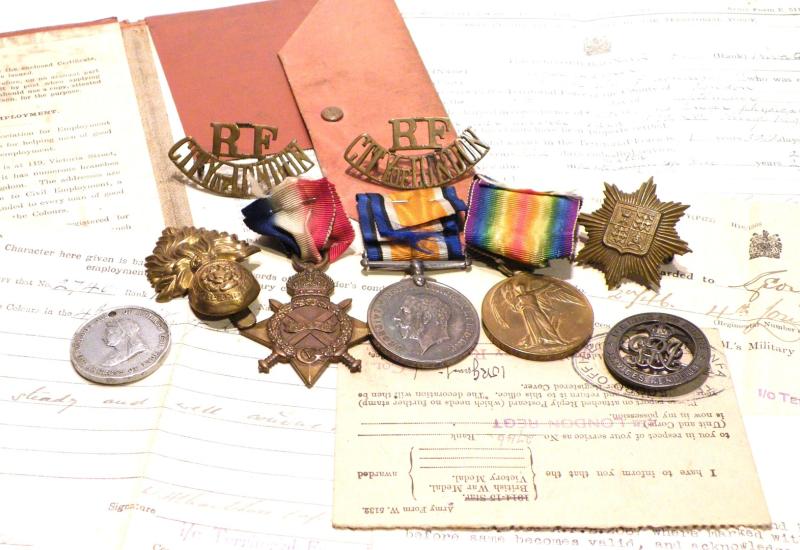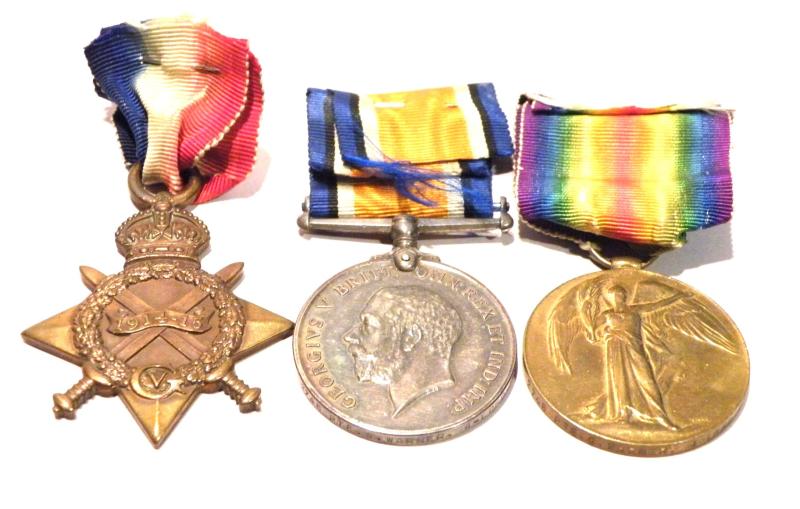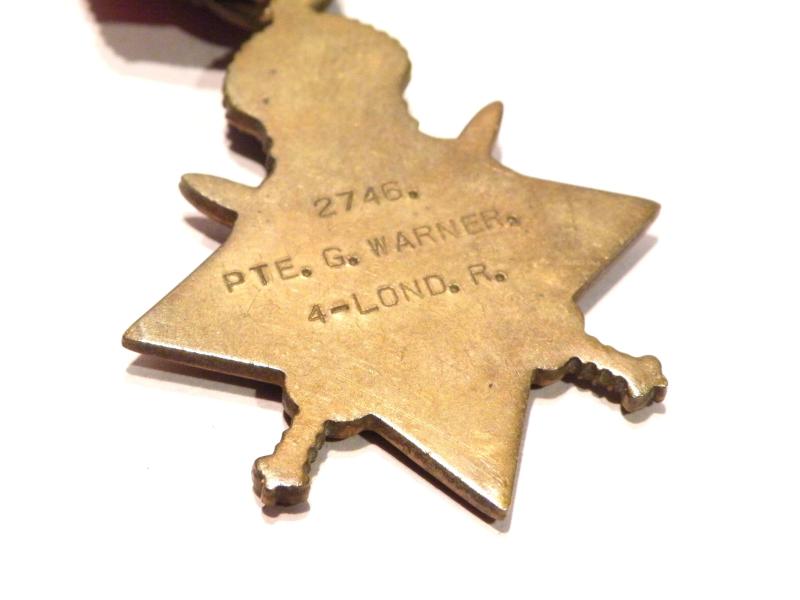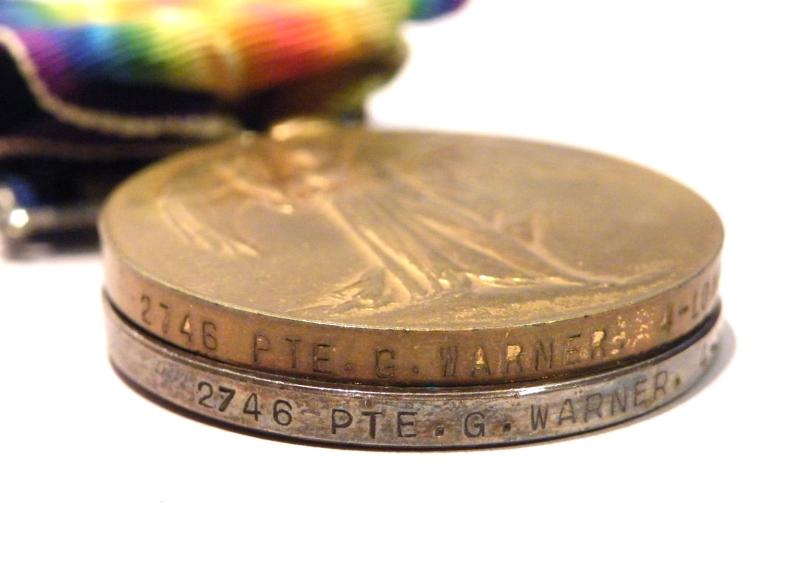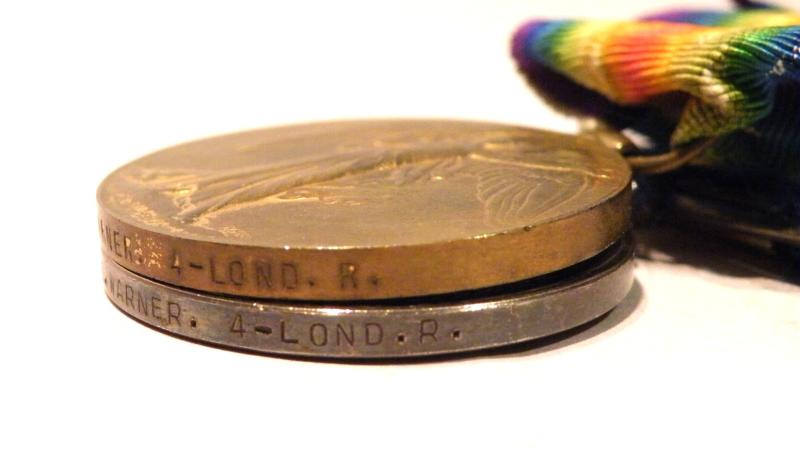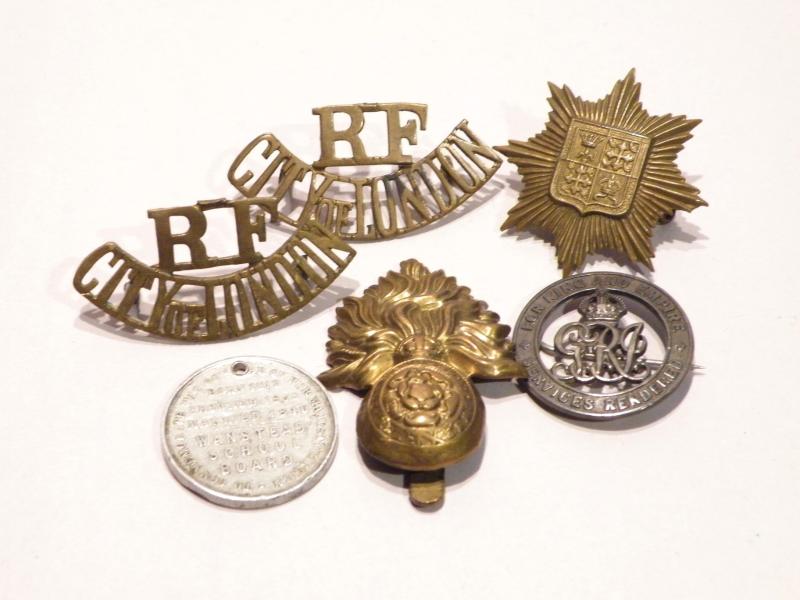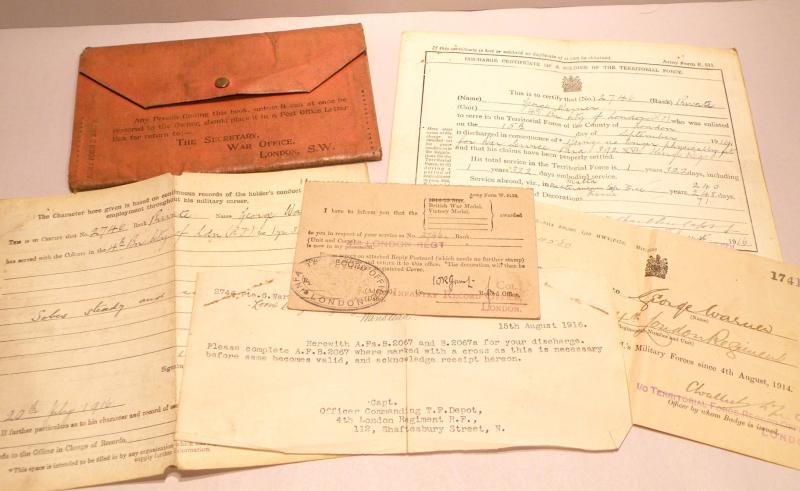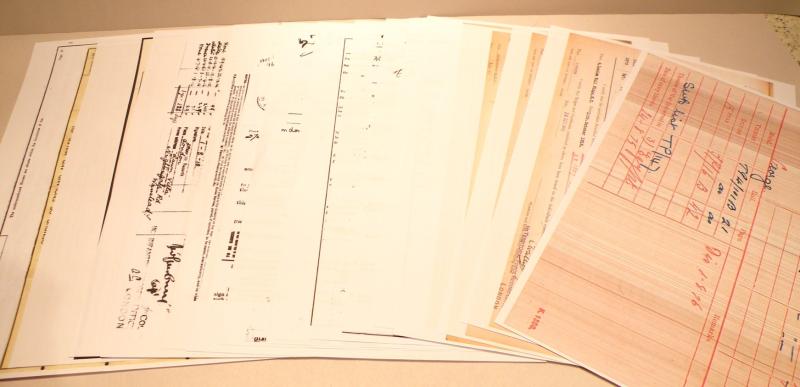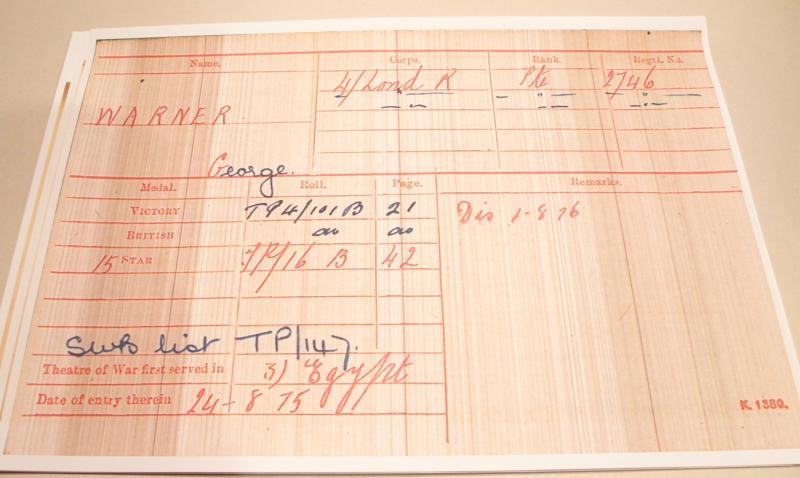WW1 1914/15star Trio to Warner 4th London Wounded 1st Day of the Somme.
A very interesting 1914/15 star, British war and victory medal all correctly named to 2746 Private George Warner of the 4th Battalion London Regiment. Also correctly numbered silver wound badge, original Royal Fusiliers Cap badge, 13th (Kensington) battalion cap badge, Royal Fusiliers City of London territorial shoulder titles and original service wallet containing various original paperwork, including silver war badge issue certificate, Discharge certificate and service certificate etc all named and relating to Private Warner.
George Warner lived and was born in Wanstead east London in 1895. Before the war he was employed as a shop boy at a Hosiers shop in the high street. He enlisted into the Royal Fusiliers Territorials and attested on 15th September 1914. After a period of training, he embarked from Southampton for Malta, to take over garrison duties from the regular soldiers needed on the front line. After a few months the battalion travelled to Egypt then Alexandreia bound for action in Gallipoli, arriving at the Dardanelles on 8th October 1915. He was split from his battalion when he contracted meningitis in January 1916 and evacuated to the general hospital in Mudros. After his recovery he was put on board HM transport ship Corsican on 8th January 1916 at Alexandria, arriving at Marseilles France on 24th April 1916, now attached to the 1/13th (Kensington) battalion London regiment, 168th Brigade of the 56th London division.
On the 1st of July 1916, the first day of the battle of the Somme, George took part in the diversionary attack at Gommecourt. This was a crucial element of the initial phase of the Battle. This attack, carried out by the Third Army, was designed to distract German forces and protect the main British offensive further south. The Gommecourt salient was a heavily fortified area and was the main target of the attack led by Lieutenant-General Edmund Allenby.
The 56th division were waiting for the whistle to blow, when at 7:20 a.m. a smoke screen was begun from the left flank and after five minutes had covered the attack front. At 7:25 a.m. the leading troops went over the top, through a German barrage which had begun to fall on the front, second and communication trenches. The troops moved forward to tapes in no man's land and lay down. At 7:30 a.m. the troops rose and began the attack, finding most of the German wire well cut, Bangalore mines having been used the night before. The German infantry had met the wire cutting vigorously, putting out concertina wire and fresh tangles in the gaps. Some troops had to bunch up to get through the gaps and some strayed in the smoke but the two leading 168th Brigade battalions were through quickly, only the two battalions following in support and reserve being delayed. The British got into the German front trench with seconds to spare and the remnants of the front position except for Nameless Farm captured. The Germans in the third trench had been able to emerge from shelter and were overrun by rifle fire and rushes by parties, troops moving up communication trenches eventually overcoming the defenders, but Nameless Farm was never captured. The farm cellars had been fortified and with shell-hole positions and part of a trench behind, the garrison held out, which tired the attackers and reduced their supply of grenades.
The attackers put out signals to the RFC crews observing the attack, sent runners to battalion headquarters and at 9:30 a.m. boards were hoisted in the three front trenches to show that they had been captured, and consolidation began.
About 300 unwounded prisoners were escorted back but unfortunately about eighty were killed in no man's land by German artillery-fire and the rest were sent back to their dugouts. The German bombardment increased to the point that the party digging the trench to protect the right flank could not begin and many of the bombers ready to advance at 9:30 a.m. were also caught in no man's land, became casualties and could not participate in the next stage of the attack against the Quadrilateral. Some parties attacked from the third trench but only one party, moving via the cemetery, reached it where it was destroyed. The attacking battalions and the reinforcements that got across to the German side were cut off by the German standing barrages on no man's land and the captured trenches. Carrying parties tried to cross with ammunition and bombs but were killed and from the front and flanks, German troops began to move towards the 168th and 169th brigade troops, who could not man a continuous line. The heavy fighting continued in to the afternoon with costs to both sides.
The attack achieved its strategic goal, but the British forces suffered heavy casualties. George was severely wounded on the first day, he was shot in the face; but to the horror and confusion of the opening stages of the battle, George was reported missing three days later. The fact was troops attempted to bring the wounded back to British front line, when a German medical officer under a white flag ordered a cease-fire saying that troops on the British side of the wire could be rescued, sadly the truce was broken by a British field gun bombarding the German front trench, but many wounded were carried to local aid and casualty clearing stations.
George was found to be at the 2nd General Hospital and almost instantly invalided back to England. He was discharged from the army of the 1st of August 1916, so he must have been in a pretty badge way, being instantly declared no longer physically fit for military service. George underwent 6 months convalescence and received a pension.
He later married Gladys and by 1921 they had one daughter Vera born in 1918. He was working as a landscape gardener in the family business. In the 1939 register he is still a gardener, but it is noted he is an ex-wounded soldier and vera as a member of the ARP.
His three medals are in very good original condition on short pieces of original ribbon, which look as if they have been cut off a ribbon bar. SWB is in very good order, dark toned and unpolished. Other badges etc in good used condition and original paperwork, in remarkably good condition.
Also included is copies of his medal index card, service records, medal roll and census information. A wonderful untouched group of all original items to one man.
Code: 30662

